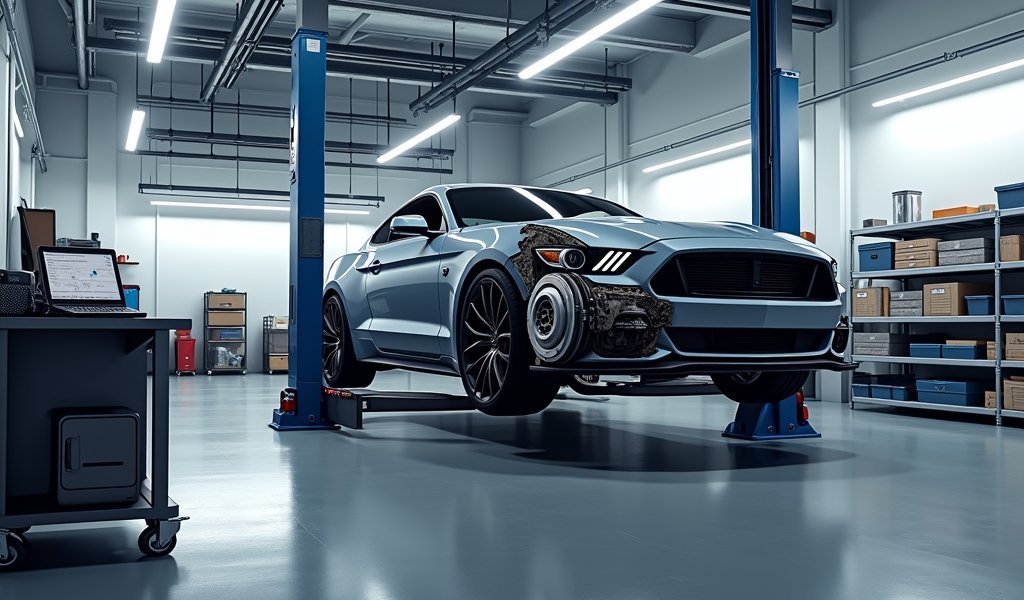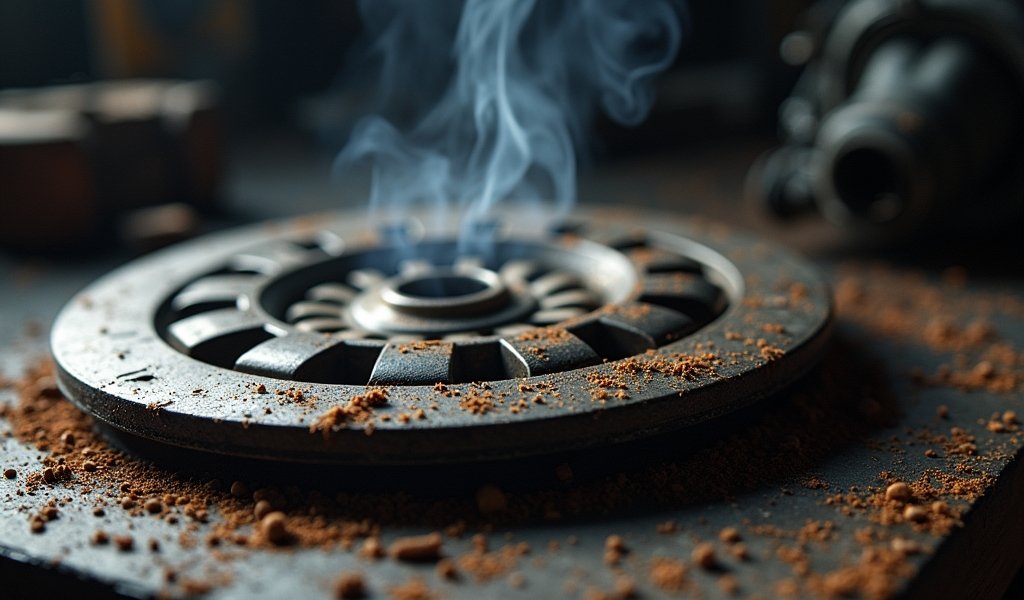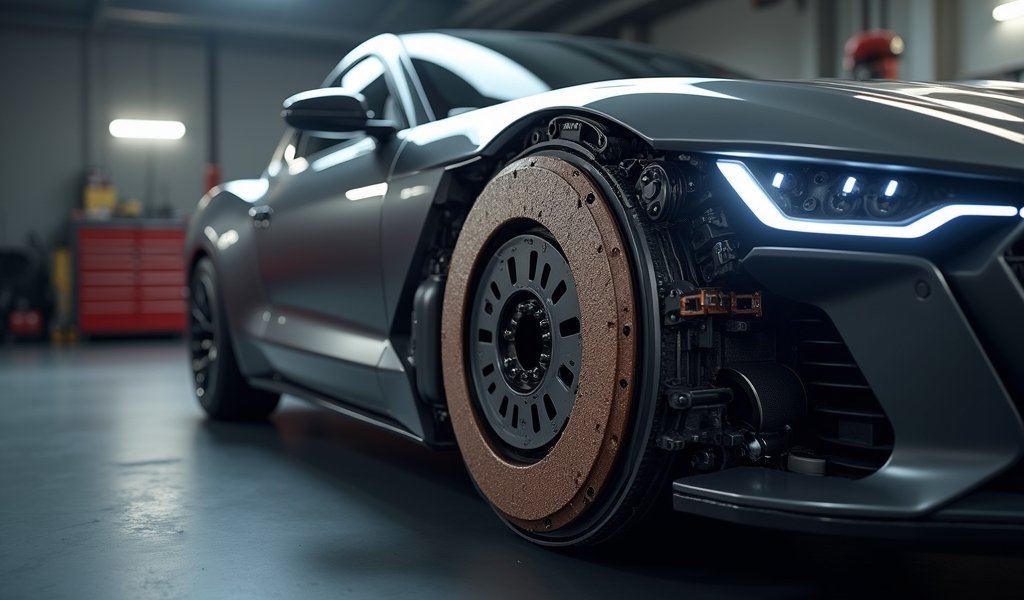Overview
This article explains common issues with clutch disc friction material and provides five solutions: complete disc replacement, flywheel resurfacing, proper break-in procedures, clutch pedal adjustment, and upgrading to performance materials. It emphasizes that understanding warning signs, implementing appropriate fixes, and adopting good driving habits can significantly extend clutch life and improve transmission performance.
Table of Contents
- Understanding Clutch Disc Friction Material
- Common Clutch Disc Friction Material Issues
- Fix 1: Clutch Disc Replacement
- Fix 2: Resurfacing the Flywheel
- Fix 3: Proper Break-In Procedures
- Fix 4: Adjusting Clutch Pedal Free Play
- Fix 5: Upgrading to Performance Clutch Materials
- Preventive Maintenance Tips
- Conclusion
- Frequently Asked Questions
Understanding Clutch Disc Friction Material
Have you ever wondered what actually happens when you press that clutch pedal? The clutch disc friction material is the unsung hero of your vehicle’s transmission system, quietly doing the heavy lifting while you seamlessly shift gears. This specialized material is designed to grip and release the flywheel, transferring power from your engine to the transmission.
The clutch disc friction material typically consists of organic compounds, ceramics, or sintered metals, each providing different performance characteristics. When functioning properly, this material creates the perfect amount of friction to engage the clutch smoothly without slipping or grabbing. It’s truly a marvel of engineering that balances durability with performance.
Over time, however, even the best-designed clutch disc friction material wears down. This wear is normal—much like brake pads—but can be accelerated by driving habits and environmental conditions. Understanding the signs of wear and knowing how to address problems can save you from costly repairs and extend the life of your transmission system.
Common Clutch Disc Friction Material Issues
When clutch disc friction material starts to fail, your vehicle will typically give you several warning signs. Recognizing these symptoms early can make the difference between a simple repair and a complete transmission overhaul.
The most common issue is simple wear and tear. Over thousands of engagements, the friction material gradually thins, reducing its ability to grip effectively. This natural process is inevitable but can be managed with proper maintenance and driving techniques.
Other common problems include:
- Glazing: When the friction material overheats, it can develop a hard, shiny surface that reduces grip
- Contamination: Oil or other fluids can penetrate the material, reducing friction and causing slippage
- Uneven wear: Improper clutch alignment can cause the friction material to wear unevenly
- Material breakdown: In extreme conditions, chunks of the friction material may break off
These issues typically manifest as clutch slippage (engine revs but the car doesn’t accelerate proportionally), difficulty shifting gears, or a clutch that grabs suddenly rather than engaging smoothly. If you’re experiencing a soft clutch pedal or strange noises when engaging the clutch, it’s likely time to inspect the clutch system components more closely.

Fix 1: Clutch Disc Replacement
When clutch disc friction material has worn beyond repair, replacement is often the only viable solution. This is the most definitive fix but also requires the most work. A complete clutch job typically involves removing the transmission to access the clutch assembly—not a task for the casual DIYer.
When selecting a replacement clutch disc, consider your driving style and vehicle usage. Standard OEM replacements work well for most daily drivers, while performance options are available for those who demand more from their vehicles. According to clutch material experts, selecting the right friction material for your driving habits can extend the life of your new clutch by up to 30%.
The replacement process generally involves:
- Removing the transmission
- Replacing the clutch disc, pressure plate, and often the release bearing
- Inspecting and possibly resurfacing or replacing the flywheel
- Reassembling the drivetrain with proper alignment and torque specifications
While this repair comes with a higher initial cost—typically between $500 and $1,500 depending on the vehicle and parts quality—it provides a fresh start for your clutch system. Most professional replacements come with warranties, giving you peace of mind for miles to come.
Fix 2: Resurfacing the Flywheel
Sometimes, the problem isn’t just with the clutch disc friction material itself but with the surface it engages: the flywheel. Over time, flywheels can develop hot spots, grooves, or warping that prevents proper clutch engagement. Resurfacing (sometimes called machining or turning) the flywheel can provide a fresh, flat surface for the clutch disc to grip.
This procedure is less invasive than a complete clutch replacement but still requires transmission removal in most vehicles. The flywheel is removed and taken to a machine shop where a specialized lathe removes a thin layer of material, creating a smooth surface. The process typically costs between $100-$200 when performed as part of a clutch job.
There are limitations to resurfacing, however. Each flywheel has a minimum thickness specification, and repeated machining will eventually render it too thin for safe operation. In such cases, replacement with a new flywheel is necessary. Dual-mass flywheels, common in many modern vehicles, often cannot be resurfaced at all and must be replaced when worn.
Resurfacing is most effective when:
- The flywheel shows minor scoring or hot spots
- The clutch has been slipping or chattering
- You’re already replacing the clutch disc
- The flywheel has sufficient thickness remaining
This fix, when combined with a new clutch disc, can restore like-new clutch performance and ensure smooth, consistent engagement of the clutch mechanism.
Fix 3: Proper Break-In Procedures
Whether you’ve just replaced your clutch or are looking to extend the life of your current one, proper break-in procedures are essential for maximizing the durability of the clutch disc friction material. The first 500 miles after installation are particularly critical, as this is when the friction surfaces mate and establish their wear patterns.
During this period, the goal is to allow the clutch materials to seat properly while avoiding excessive heat buildup. Heat is the enemy of clutch friction material—it can cause glazing, material transfer, and premature wear. Research from SAE International suggests that proper break-in can extend clutch life by up to 20%.
Follow these break-in recommendations:
- Avoid aggressive launches and rapid acceleration for the first 500 miles
- Shift at moderate RPMs rather than redlining the engine
- Allow the clutch to fully engage between shifts (no “riding” the clutch)
- Minimize extended periods of slipping, such as holding the car on hills using the clutch
- Vary your driving conditions to allow different engagement patterns
For drivers with new vehicles or fresh clutch installations, this break-in period pays dividends in longevity. Even with existing clutches, adopting these gentler habits can slow the wear rate and extend the remaining service life of your clutch disc friction material.
Fix 4: Adjusting Clutch Pedal Free Play
One often overlooked aspect of clutch performance and longevity is proper pedal adjustment. Free play—the distance the clutch pedal moves before the clutch begins to disengage—is critical for ensuring the clutch disc friction material isn’t constantly under stress.
Too little free play means the clutch is partially disengaged even when your foot is off the pedal, causing continuous slippage, heat buildup, and accelerated wear. Too much free play, conversely, makes it difficult to fully disengage the clutch, resulting in difficult shifting and potential damage to transmission synchros.
Many vehicles with cable-operated or hydraulic clutches have adjustment mechanisms that allow for fine-tuning this free play. The clutch pedal adjustment procedure varies by vehicle, but typically involves:
- Measuring the current free play (usually 1-1.5 inches is ideal)
- Adjusting the clutch cable tension or pushrod length
- Verifying proper clutch engagement and disengagement
- Testing for slippage under load and smooth shifting
This adjustment is relatively simple on many vehicles and can often be performed without special tools. Consult your service manual for specific procedures and measurements for your make and model. Regular checks and adjustments can catch wear issues before they become severe enough to damage the clutch disc friction material.

Fix 5: Upgrading to Performance Clutch Materials
If you’ve repeatedly experienced clutch disc friction material issues or your driving demands exceed what standard clutches can deliver, upgrading to performance materials might be the solution. Modern clutch technology offers several material options, each with distinct advantages for specific applications.
Organic clutches (the standard in most vehicles) provide smooth engagement and quiet operation but have temperature limitations. For drivers seeking more durability without sacrificing too much comfort, ceramic-metallic compounds offer a middle ground. At the high-performance end, sintered iron and carbon materials provide exceptional heat resistance and grip but may introduce more noise and a firmer pedal feel.
Consider these upgraded options:
- Kevlar-reinforced organic: Better heat resistance than standard organic with similar feel
- Ceramic: Excellent heat handling for sporty driving with moderate pedal effort
- Sintered iron: Maximum durability for racing applications, but harsher engagement
- Carbon carbon: Extremely lightweight with exceptional performance, but at premium cost
When upgrading, consider your complete clutch system. A performance clutch often requires a stronger pressure plate and may benefit from a lightweight flywheel. Remember that increasing the holding power typically results in a firmer pedal feel and sometimes more abrupt engagement. For daily drivers, a mild upgrade that maintains reasonable comfort while improving durability often makes the most sense.
Preventive Maintenance Tips
An ounce of prevention is worth a pound of cure—especially when it comes to your clutch disc friction material. Implementing these preventive maintenance tips can significantly extend your clutch’s service life and keep your transmission shifting smoothly for years to come.
First and foremost, develop clutch-friendly driving habits. Avoid resting your foot on the clutch pedal (a common habit that causes constant partial disengagement) and learn to shift smoothly without excessive revving. When stopping at traffic lights, fully disengage the clutch or shift to neutral rather than holding the clutch at the friction point.
Regular maintenance is equally important:
- Check hydraulic clutch fluid levels and condition every 30,000 miles
- Inspect clutch cables for fraying and proper adjustment annually
- Have unusual clutch noises or changes in pedal feel diagnosed promptly
- Address engine or transmission oil leaks quickly to prevent contamination
- Consider a transmission fluid change according to manufacturer recommendations
Additionally, be mindful of how you use your vehicle. Excessive towing, frequent mountain driving, or track days all increase clutch wear. If your driving habits include these activities, consider upgrading to more durable clutch components before failures occur.
Finally, don’t overlook the importance of proper gear selection. Lugging the engine (driving at too low RPM for the selected gear) causes the clutch to slip as it tries to overcome the mismatch between engine power and vehicle speed. This creates excessive heat that damages the friction material. Downshift when necessary to keep the engine in its power band.
Conclusion
Clutch disc friction material may be just one component in your vehicle’s complex drivetrain, but its condition significantly impacts your driving experience and transmission longevity. By understanding the warning signs of wear, implementing appropriate fixes, and adopting preventive maintenance habits, you can maximize the life of this critical component.
Whether you opt for a complete replacement, flywheel resurfacing, proper break-in procedures, clutch pedal adjustments, or performance upgrades, addressing clutch issues promptly prevents more extensive damage. Remember that the best approach often combines multiple solutions—a new clutch disc paired with a resurfaced flywheel and followed by proper break-in procedures, for example.
Your clutch is literally the connection between your engine’s power and your vehicle’s forward motion. Treating it with care pays dividends not just in repair savings but in the smooth, confident shifting that makes manual transmissions so engaging to drive. With the right knowledge and maintenance approach, your clutch disc friction material can provide tens of thousands of miles of reliable service.
Frequently Asked Questions
How long does clutch disc friction material typically last?
Most clutch discs last between 50,000 to 100,000 miles depending on driving habits and conditions. Heavy traffic, mountain driving, and towing significantly reduce this lifespan.
Can I replace just the clutch disc without changing the pressure plate?
It’s not recommended as the pressure plate typically wears in conjunction with the disc. Most mechanics replace them as a matched set to ensure proper performance.
What causes clutch disc friction material to wear out prematurely?
Riding the clutch pedal, excessive slipping during starts, and aggressive driving are common causes. Fluid contamination and improper adjustment can also accelerate wear.
How can I tell if my clutch disc friction material is worn?
Signs include the clutch slipping under load, higher engagement point on the pedal, and difficulty shifting gears. A burning smell during acceleration often indicates severe wear.
Is it worth upgrading to performance clutch disc friction material for a daily driver?
For most daily drivers, a high-quality OEM-style replacement is sufficient. Performance upgrades typically introduce harsher engagement and higher pedal effort with minimal benefit in normal driving.

